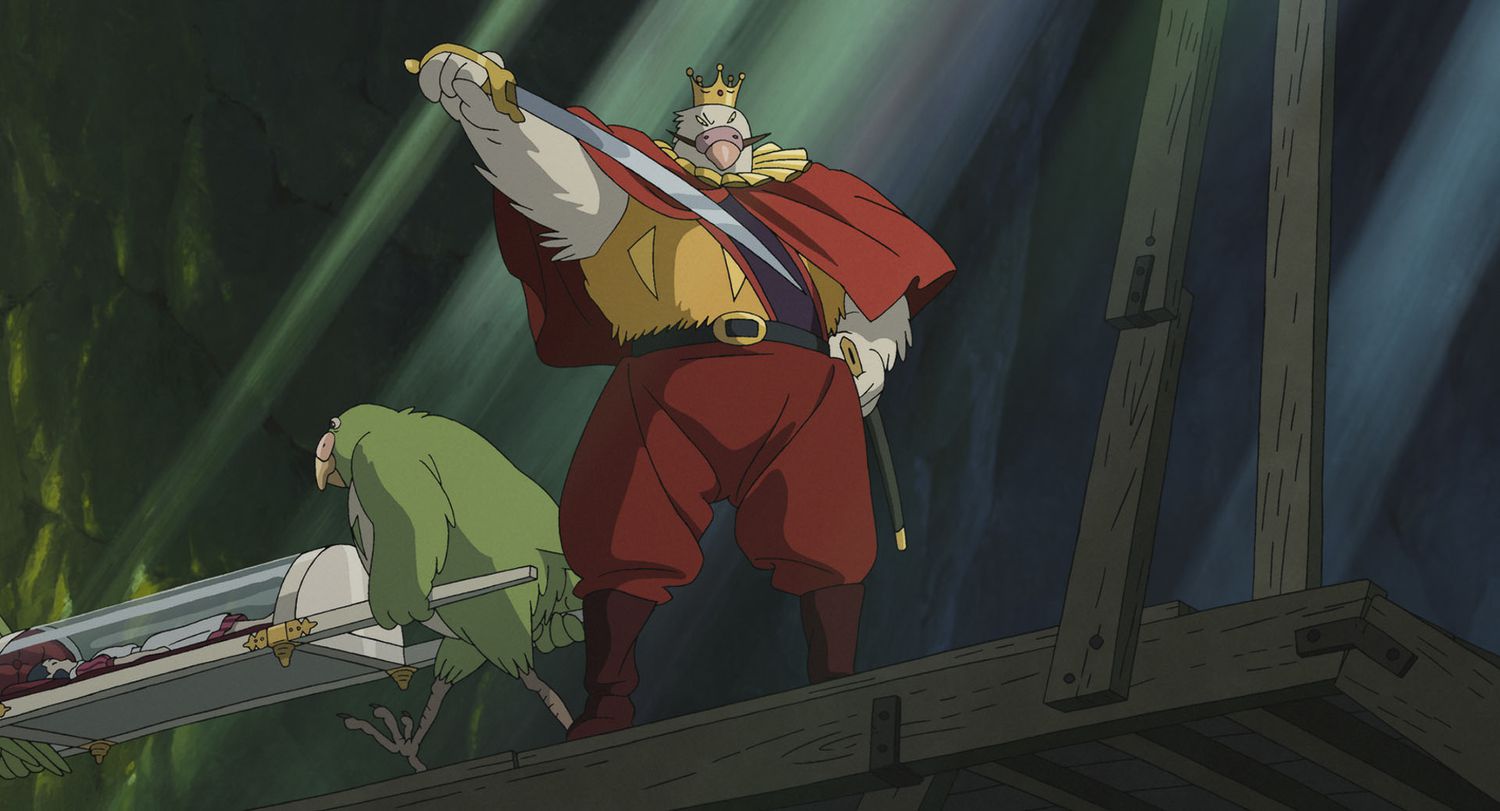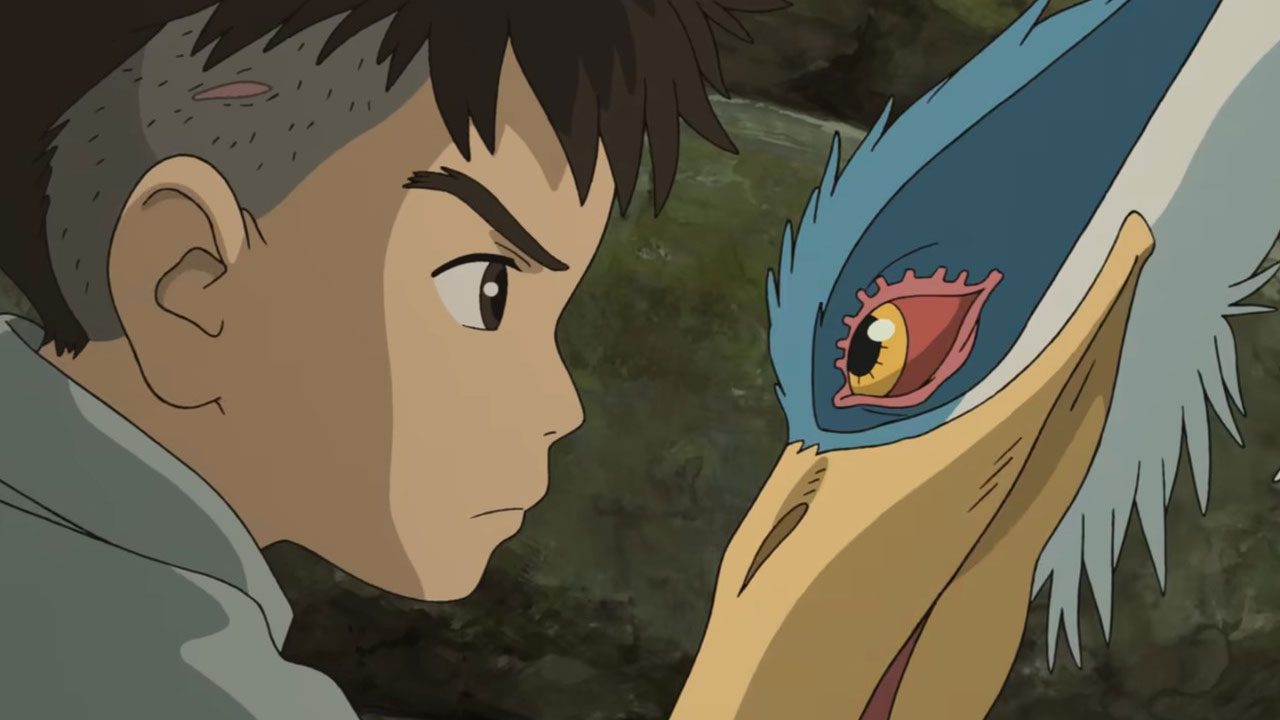REVIEW: The Boy and the Heron (2023)
I wish I could say I’ve followed Studio Ghibli for decades. But unlike Disney, Pixar, and DreamWorks, I was unfamiliar with the Japanese studio until I was a young adult. Over the last decade or so, I’ve watched all of their movies at least once and some several times. But The Boy and the Heron is my first Ghibli theater experience, as Earwig and the Witch went straight to HBO Max, now just Max. I admire the works of Isao Takahata and like most Studio Ghibli films, but Hayao Miyazaki has directed most of my favorites. This is a common sentiment, but it’s how I feel. I was more than a little excited to hear that Miyazaki was coming out of retirement (again) to direct The Boy and the Heron. I absolutely love Princess Mononoke, Howl’s Moving Castle, and The Wind Rises. And the trailers, scant as they were, looked and sounded terrific! This weekend, Miyazaki’s latest film hit theaters in America. Let’s find out how it compares.
Inspired by the 1937 novel How Do You Live? by Genzaburo Yoshino, The Boy and the Heron follows a young boy named Mahito who loses his mother in a hospital fire. A year later, his father marries Natsuko, Mahito’s late mother’s younger sister, and they get pregnant. At Natsuko’s home, Mahito encounters a talking grey heron who insists his birth mother is alive. Mahito’s pursuit of the heron and his mom leads to questions surrounding his family and a whole other world created by a recent ancestor.
It goes without saying that this movie is gorgeous, but it still exceeded my high expectations. The Boy and the Heron is a visual feast, engulfing your eyes in flames and artfully breathing life into the birds that inhabit this world. Some flourishes remind me of prior Ghibli efforts, like the warawara resembling the forest spirits in Princess Mononoke. The grannies who watch over Mahito resemble various other elderly women in Ghibli films, like Yubaba in Spirited Away or Sophie in Howl’s Moving Castle. These films are more honest about the elderly and feature them more prominently than much of American animation. The plants, animals, and textures in this movie are to die for. The Boy and the Heron is the most expensive Japanese film ever made, and if you see it in theaters, it’s evident on the screen. This movie is just gorgeous. The score by Ghibli veteran Joe Hisaishi is unique and complex. I feel the music transported me to a faraway world as much as the film’s visuals.

Despite wanting to see the dub, I saw the subbed version of The Boy and the Heron. I remain eager to hear Willem Dafoe, Mark Hamill, etc., in this film. They and Christian Bale have acted in Ghibli dubs before. I usually prefer subtitles for foreign-language movies, but Studio Ghibli consistently gets excellent English casts. I say this to express my limited capacity to judge the Japanese vocal performances. Soma Santoki brings a lot of emotion to the role of Mahito. He’s the most interesting and emotive character in the movie. Masaki Suda is intimidating and creepy as the grey heron. I don’t understand Japanese, but everyone sounded good. I wasn’t drawn out of the experience by a mismatched voice or a dissonant line delivery, although I plan to see the dub next time I watch this movie.
I’ve grappled with this movie a lot since I saw it on the 9th. I love a lot of Studio Ghibli’s canon and have never felt confused by one of their films before. But once The Boy and the Heron ended, I just sat and stared at my husband. Not only was I confused, but I didn’t even know what questions I had. What did I just watch? I couldn’t understand what the movie was about what it was trying to say. I’m used to seeing strong bonds between characters in these films. The fantasy worlds some of them contain usually represent something, and the heroes struggle with intense internal turmoil. Young Mahito certainly has problems; I’m not arguing that, I was just absolutely confounded by this movie! I think The Boy and the Heron will take me a few viewings. I’m left bewildered by Mahito’s relationship with his stepmother and how little progression I felt with that. All I can think about is Lady Himi, the fire-wielding girl. She is a younger version of Mahito’s mother, Hisako, from the past. Kiriko explains that the warawara can’t exist without Lady Himi’s protection. Maybe Hisako had to live and die the way she did so future generations could exist. Natsuko is now pregnant, which wouldn’t have happened if Hisako was alive and married to Mahito’s father. I’ve seen people equate Mahito to Hayao Miyazaki himself or say that the great-uncle represents him. I don’t know what to think, or which of these readings, if either, I prefer. This film is not intended to be consumed and broken down in one sitting. I found this video very informative and helpful regarding the numerous metaphors and messages in the movie. I recommend checking it out if you were similarly bewildered. I’m not endorsing this or any other as the correct analysis, but I found it interesting. I plan to see the movie again in its dubbed form and really think about it this time. On my first viewing, I was solely intent on enjoying the experience.

The Boy and the Heron is a stunning artistic and technical achievement. From the very first frame, this film is a thrilling work of art. It feels insulting to compare a genuine passion project like this to a hollow, commercial product like Wish. However, I find it noteworthy that Wish was supposed to commemorate the grand legacy of Walt Disney Animation Studios but failed. Meanwhile, I didn’t hear such grandiose proclamations about The Boy and the Heron, which fits the bill much better. This movie harkens back to various Ghibli classics. Even though Miyazaki says he’s not retiring after this, I would feel okay if he did. It’s not that I want him to; The Boy and the Heron is just a very fitting swan song for a glorious career, and the references here serve the story rather than detracting from it.
The Boy and the Heron (2023)
Plot - 10
Acting - 10
Direction/Editing - 10
Music/Sound - 10
Animation - 10
10
Outstanding
I'm not quite sure how to feel about The Boy and the Heron, but what I do is that it's a technical wonder. I wish I had more input to offer regarding the esoteric imagery within the alternate reality, but for now, I have a lot to ponder.







